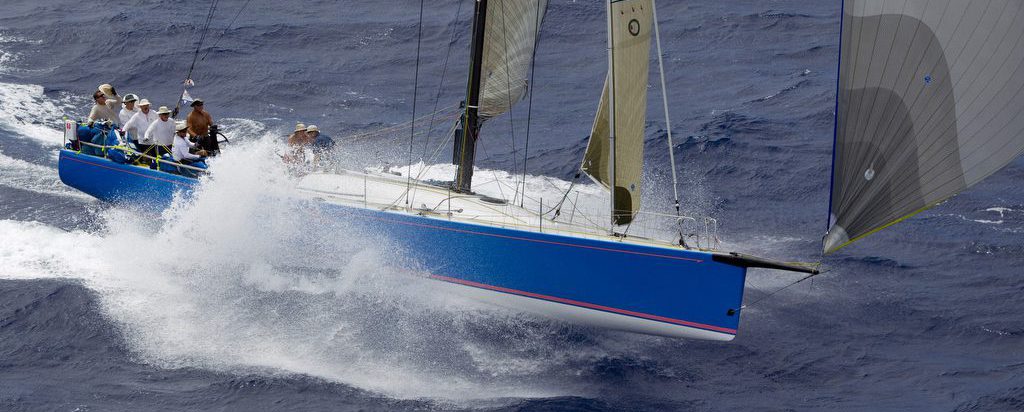This is a fundamental point in understanding how the calculations made by the program relate to how you would actually sail a course.
If you enter a route into the program manually, you are telling the program the exact route you want the boat to sail. Then if you add a wind file and polar data, the program will compute how long it will take to sail this route. In making this computation, the program assumes that you will travel exactly along each segment of the route, sailing so as to maximize the velocity made good (VMG) along each segment.
It may turn out that a segment of your requested route goes upwind at the time the boat will be sailing it. In this case, the program assumes the boat will tack along the route so as to maintain best upwind VMG. The Polar data gives the optimum angles to sail each tack, and the program assumes the boat will use these best tacking angles. In other words, for the segments of the route that are upwind, the program expects the boat to tack optimally so that boat course made good is exactly the route segment.
Imagine racing around the buoys. From Buoy A to B the straight line is upwind. That is the “course made good” and it is the route segment you would draw in BWR. But to sail it you must tack. The time to reach B is the upwind distance from A to B divided by upwind VMG, velocity made good. This time is what BWR computes. It doesn’t care exactly when and where you tack going from A to B, because it doesn’t matter in a constant wind field (which is the assumption made during the computation), as long as the tacks are sailed at the best VMG angle for the windspeed. You can tack once, or ten times. The course made good from A to B, and hence the time from A to B, will be the same. (Draw out the geometry if you like.) Note: BWR makes the simplifying assumption that tacks and gybes add no additional time. This is obviously not true in the real world. But for long distance races, we presume that the number of tacks and the time spent in tacking will be dwarfed by the total time spent sailing on each tack, and so the error in time caused by this simplifying assumption will be insignificant compared to errors in the wind forecast.
For example, sailing 10K over a 60 NM leg, tacking 30 times to stay within 1 NM of course centerline at all times, figuring each tack adds 30s of travel time (pretty pessimistic: that’s saying a tack is equivalent to your boat stopping dead in the water for 30s), the total cost of tacking is 15 minutes in 6 hours, or about 4% of the total time.
Note that if the route segment is downwind, BWR assumes the boat is sailed at maximum VMG along the segment. This may involve gybing, and it is treated in exactly the same way as tacking.
OPTIMIZING
The optimizer computes a series of route segments. Normally, it is allowed to add segments that go upwind or downwind and may involve tacking or gybing to complete. The time to sail these segments is computed as above, assuming they will be sailed using best VMG angles as needed. If the optimizer chooses to sail along such a segment, it’s because the wind is good there, and the boat will take less time overall to travel the route even though it is tacking or gybing down this particular segment. In sailing it, you should stick pretty close to the course line, because that’s where the good wind is.
If you prefer the optimizer to generate only route segments that can be sailed without tacking or gybing, select the option “Simple Legs” in the route options form. Since this limits the choices for the optimizer, it may result in routes that take more time to sail.

